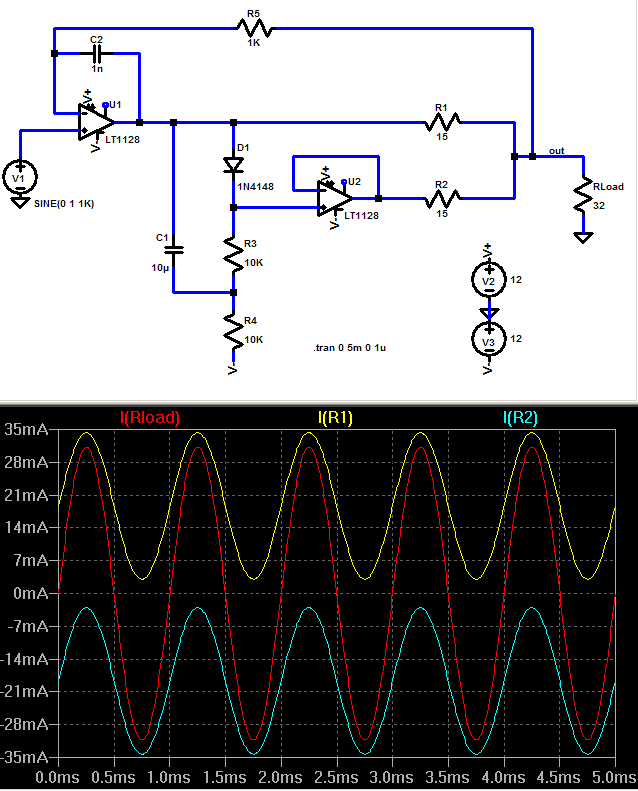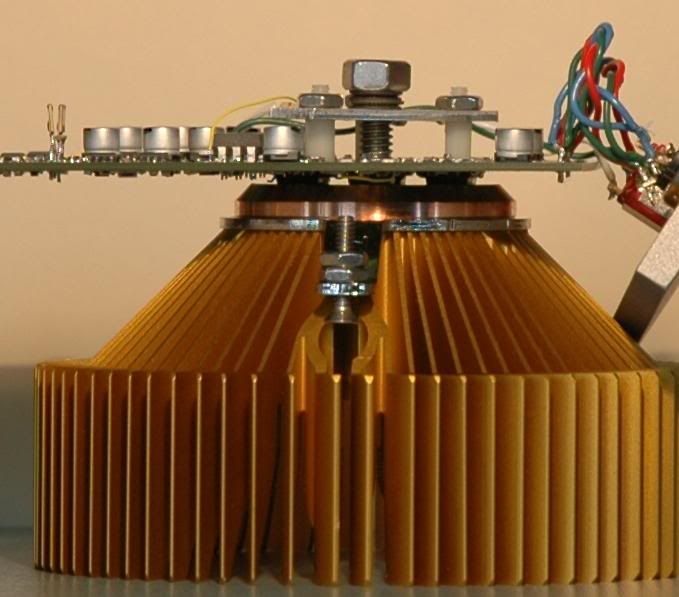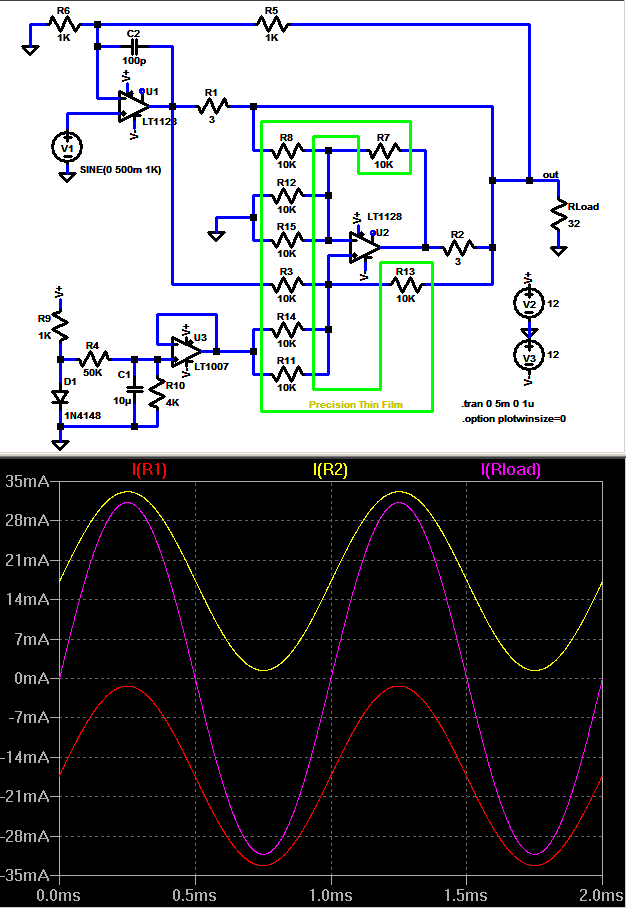jcx
Headphoneus Supremus
- Joined
- Jul 24, 2002
- Posts
- 2,371
- Likes
- 372
You do seem to be stuck conceptually here on the idea that fets are the only current sources in the world and that you even want a ccs for Class A bias for full range output drive
A ccs loading a op amp creates a single ended Class A output with only 25% efficiency of peak output power to static dissipation ratio – measure output in rms W and efficiency drops even more – ½ of the static power is wasted heating up the op amp, the op amp sees even worse dynamic current demands as it has to supply 2x current on positive peaks – both the load and the ccs current (sink)
Class A bias can also be done push-pull – each of 2 amplifying devices see ½ the peak load current at rest, each device current changes linearly as the output moves, one increasing, the other decreasing so that at full swing one device just reaches 0 current as the other supplies all of the load current
Push-pull Class A is 50% efficient from peak power to static and requires each device only be biased at ½ the peak current and dissipate only ½ of the peak rated power – much easier if heat removal is your limitation
A op amp push pull class A can be done with the A47 style parallel scheme – just introduce a floating voltage source in series with the “slave” op amp’s input to offset the 2 op amp outputs to get the desired current thru the resistors that sense and add the outputs – the approach I used

A ccs loading a op amp creates a single ended Class A output with only 25% efficiency of peak output power to static dissipation ratio – measure output in rms W and efficiency drops even more – ½ of the static power is wasted heating up the op amp, the op amp sees even worse dynamic current demands as it has to supply 2x current on positive peaks – both the load and the ccs current (sink)
Class A bias can also be done push-pull – each of 2 amplifying devices see ½ the peak load current at rest, each device current changes linearly as the output moves, one increasing, the other decreasing so that at full swing one device just reaches 0 current as the other supplies all of the load current
Push-pull Class A is 50% efficient from peak power to static and requires each device only be biased at ½ the peak current and dissipate only ½ of the peak rated power – much easier if heat removal is your limitation
A op amp push pull class A can be done with the A47 style parallel scheme – just introduce a floating voltage source in series with the “slave” op amp’s input to offset the 2 op amp outputs to get the desired current thru the resistors that sense and add the outputs – the approach I used






